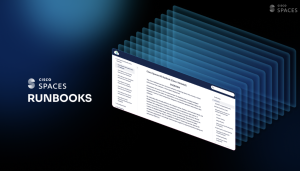
Enterprises are constantly looking for innovative solutions to better understand and manage their physical spaces. One such solution is occupancy counting, which offers valuable insights into real-time and historical office space utilization. Understanding how physical space is being used can help the management take data-driven decisions regarding space planning. At the forefront of occupancy monitoring, is Cisco Spaces that has revolutionized workplace management with its advanced occupancy monitoring capabilities.
Understanding Occupancy Counting
Occupancy counting involves the use of IoT/BLE sensors and analytics tools to gather real-time data on how many people are present in a given space. Deploying sensors strategically across an office or building allows organizations to accurately monitor occupancy levels and determine the utilization of different areas.
Space Optimisation Through Occupancy Data
Cisco Spaces provides an efficient and reliable system for collecting occupancy data, enabling businesses to make data-backed decisions related to office space utilization. Using occupancy data in building management, enterprises can achieve the following…
- Improved employee satisfaction through more suitable office layouts and environments.
- Productivity boost through improved working conditions.
- Reduced real estate costs by more effectively utilizing existing space.
So, how exactly does occupancy counting help manage space?
Real-Time & Historical Insights
Monitoring occupancy also provides real-time and historical insights into office space utilization. With access to accurate occupancy data, organizations can determine whether their office spaces are being used effectively or if certain areas go underutilized. This allows them to identify bottlenecks and make timely adjustments to maximize office space utilization.
Efficient Space Planning
Through the analysis of historical occupancy data, businesses can identify trends and patterns that can guide their future space planning decisions. Understanding which areas are frequently used and which are not, helps space management teams redesign their office spaces to better accommodate employee needs, increase collaboration, and foster productivity.
Cost Reduction
Monitoring occupancy also allows organizations to evaluate the usage of meeting rooms, workstations and other resources. This in turn enables them to eliminate underutilized spaces or repurpose them, which leads to efficient use of resources. It also reduces unnecessary expenses associated with maintaining unused or underutilized areas.
Occupancy Counting with Cisco Spaces
Spaces receives telemetry from wired and wireless sensors (Wi-Fi, BLE) to deliver occupancy monitoring. The platform collects and analyzes real-time occupancy data, providing businesses with actionable insights to make informed decisions related to space planning, resource allocation and workplace safety.
Learn more about Cisco Spaces’ occupancy monitoring solutions




